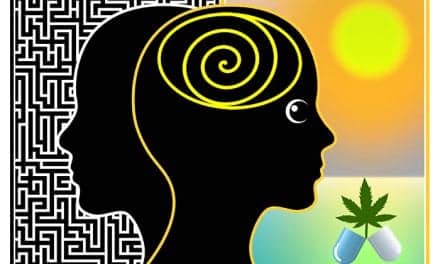New launches and upcoming plans from ZOLL Respicardia, Inspire Medical, and LivaNova make patient data more accessible and trackable.
By Yoona Ha
Once patients are implanted with neurostimulators and return to sleep specialists for long-term care, digital tools—similar to those for CPAP management—are available for monitoring. Here are the latest therapeutic data advances surrounding the remedē System, Inspire, and aura6000.
ZOLL Respicardia’s Next-Gen Device and New Digital Hub
A lot has changed since the US Food and Drug Administration (FDA) approved ZOLL Respicardia’s remedē System for use among patients with moderate to severe central sleep apnea in 2017. The remedē System is an implantable device that’s inserted under the skin in the upper chest. Thin wires that are threaded through veins near the phrenic nerve are a part of the system that’s programmed by a physician, who sets the stimulator to deliver the most appropriate therapy for the patient.
The remedē system works by delivering small electrical stimulus to the phrenic nerve while the wearer is asleep. The stimulation therapy is designed to activate the breathing muscles and restore a more natural breathing rhythm.
After a patient is identified as a candidate for the remedē system, the patient goes through an outpatient procedure with light sedation. During this procedure, the provider implants the device. The treatment itself is intended to be delivered only during sleep. For example, the remedē system works only at the time of day when the patient is expected to be sleeping, and it turns on only when the patient is inactive and lying down.
The COVID-19 pandemic hastened the adoption of telemedicine and the reliance on in-home diagnostics, as providers and patients pivoted away from in-person visits. Robin Germany, clinical assistant professor at the University of Oklahoma and chief medical officer of ZOLL Respicardia, says her company saw the pandemic both as a challenge and an opportunity.
“When patients couldn’t be easily seen in-person and supply chain issues challenged device manufacturers to fulfill orders, physicians looked for new ways to diagnose and treat patients. Home sleep testing accelerated rapidly, including the use of in-home diagnostics that differentiate central versus obstructive sleep apnea. Supply chain issues helped both patients and providers to look at novel therapies—like ours—that provide alternative treatment options and offer a unique set of features and benefits,” Germany says. “COVID-19 has been a difficult time, but the upside is that more people became aware of innovative solutions that may be both patient-friendly and beneficial.”
In 2021, ZOLL Respicardia received FDA approval for the next-generation remedē EL-X system. The system not only includes a 40% longer battery life and is 25% smaller in size, but it also includes a digital hub called DRēAM View that allows providers to share data-driven clinical insights and review full-night data from the patient.
The provider can use DRēAM View to analyze data that’s continuously collected from the patient and use it to inform decision making. Long-term patient monitoring is easier for providers, who get to program the device leveraging patient data for 4 to 6 weeks. Providers get to make iterative tweaks over the first few months, but once the final programming tweaks are made patients are only required to come in for adjustments once per year or every two years.
“COVID accelerated some of the new practices that were already beginning to take hold. Home sleep testing is here to stay and is rapidly gaining acceptance, though complex patients will likely continue to get in-lab PSGs,” Germany says. “At the same time physicians are also increasingly adopting new therapies and starting to take a more multi-prong therapeutic approach in order to benefit the patient holistically.”
Inspire Reveals SleepSync, Other Digital Health Offerings
In 2014, the FDA approved Inspire Medical System Inc’s Inspire Upper Airway Stimulation, which involves placing a small device under the skin that uses electrical leads to stimulate the nerve that controls the tongue to allow air to pass through more freely. It’s approved to treat moderate to severe obstructive sleep apnea among adult patients who meet certain criteria including not having a complete blockage of their upper airway and who have failed CPAP. Unlike the remedē system, the therapy doesn’t turn off or on until the patient uses a sleep remote that starts and stops treatment.
Inspire has debuted several new digital health offerings since its launch. In 2018, the company launched Inspire Cloud to allow providers to track therapy adherence and efficacy. In 2020, it launched the patient-facing Inspire Sleep app in the Google Play and Apple app stores. Last year, the FDA approved a new physician programmer platform, which includes a telemetry cable that enables Bluetooth connectivity to the programmer tablet.
Most recently, at SLEEP 2022 the company introduced Inspire SleepSync, the next-generation Inspire digital platform that unlocks remote therapeutic monitoring through a Bluetooth-enabled patient remote and web-based patient management portal. Inspire SleepSync now includes more than 2.5 million nights of sleep.
According to a 2022 investor presentation, digital health offerings in the works include remote programming and apnea-hypopnea index outcomes monitoring.
LivaNova Sketches Monitoring Outline as It Awaits FDA Approval
In 2021, LivaNova received approval from the FDA to go forward with its randomized controlled study, “Treating obstructive sleep apnea using targeted hypoglossal neurostimulation (OSPREY),” to investigate the safety and efficacy of its investigational aura6000 system, which is an implantable hypoglossal neurostimulator intended to treat patients with moderate to severe obstructive sleep apnea.
What differentiates LivaNova’s therapy, according to Bryan Olin, senior vice president and head of product development in neuromodulation, is a faster surgical procedure time (about half as long) as other hypoglossal nerve stimulation procedures currently available in the market. In addition, it doesn’t require diagnostic procedures like drug-induced sleep endoscopy to qualify candidates and its surgery does not require nerve dissection.
Initially LivaNova plans to launch with features that monitor device performance such as when it needs to recharge its battery, but details of digital therapeutic and diagnostic capability details will become more clear as the device is approved for treatment by the FDA. “We will leverage our experience with home sleep tests in OSPREY and our work with our Epsy app (for epilepsy) to innovate and develop next-generation solutions to help patients monitor their disease state and how it is being improved by aura6000,” Olin says.
The aura6000 System received the CE mark in 2012 and “we assume a submission for FDA approval is likely to occur in mid-2024,” Olin says.
Yoona Ha is a freelance writer and healthcare public relations professional.
Illustration 148846745 © Flat Art | Dreamstime.com




